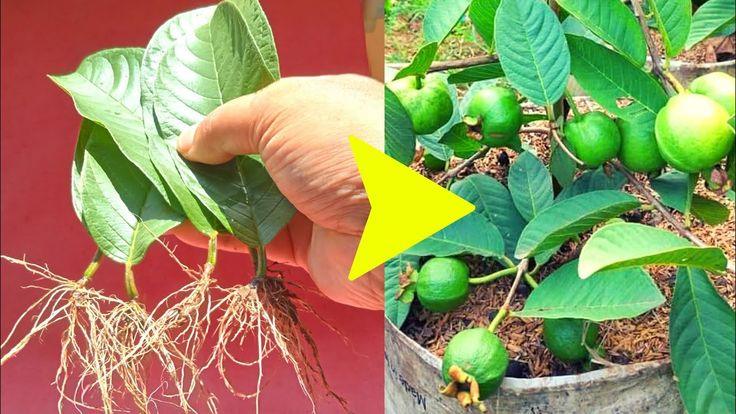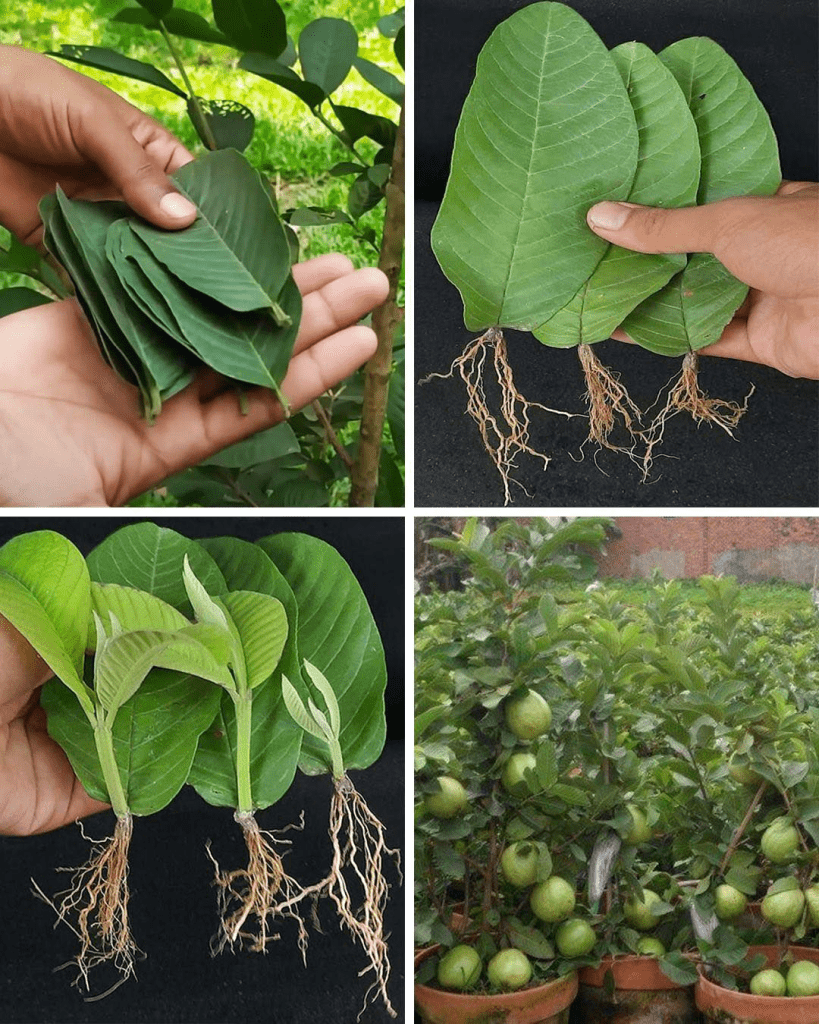
Grow Guava Trees from Guava Leaves
Guava trees are loved for their delicious fruits and do well in tropical and subtropical regions across the globe. While most people propagate them using seeds, cuttings, or air layering, growing guava trees from guava leaves is an interesting alternative. Though not as widely practiced, it can be a fun experiment for gardening fans. Now, let’s explore the detailed process of growing guava trees from guava leaves.

Materials Needed:
- Healthy guava leaves sourced from a mature guava tree
- Clean, sharp knife or scissors
- Rooting hormone (optional)
- Pot with well-draining soil or seedling tray
- Plastic bags or plastic wrap
- Warm, brightly lit location with indirect sunlight
Step-by-Step Guide:
- Leaf Selection: Begin by selecting mature and healthy guava leaves from a thriving guava tree. Ensure the leaves are free from pests and diseases, as these can hinder successful propagation.
- Leaf Cuttings: Using a clean knife or scissors, cut the guava leaves into sections, ensuring each section includes a portion of the main vein. Cuttings should be 4-6 inches long. Consider taking multiple cuttings to increase propagation success.
- Rooting Hormone (Optional): While not obligatory, applying rooting hormone can boost root development. If opting for rooting hormone, dip the cut end of each leaf cutting into the hormone following the manufacturer’s instructions.
- Planting: Plant the prepared leaf cuttings in a pot filled with well-draining potting mix or soil. Place them horizontally with the cut end partially buried in the soil. Space multiple cuttings a few inches apart within the pot or tray.
- Enclose in Plastic: Cover the pot or seedling tray with a clear plastic bag or plastic wrap to create a greenhouse effect. This will help maintain humidity around the leaf cuttings, facilitating rooting.
- Provide Adequate Care: Position the pot or tray in a warm area with bright, indirect sunlight. Keep the soil consistently moist by misting the cuttings or watering them as necessary. Avoid overwatering to prevent rot.
- Patience: Root development requires time, ranging from several weeks to months. Remain patient and continue caring for the cuttings during this period. Monitor humidity levels inside the plastic enclosure, ensuring they remain relatively high.
- Transplanting: Once the leaf cuttings have established a healthy root system and grown into small plants, transplant them into larger pots or directly into the garden. Ensure they receive ample sunlight and water for continued growth.
Tips and Considerations:
- Success rates may vary, as not all guava leaves will propagate successfully using this method.
- Certain guava varieties may be more conducive to leaf propagation than others. Experimentation may be necessary to determine optimal results.
- Avoid overwatering, as excessive moisture can lead to rot.
- Maintain a warm, humid environment during the rooting phase to promote successful propagation.
In summary, although growing guava trees from guava leaves is an interesting gardening endeavor, it requires patience and an understanding of its varying success rates. For those seeking a more reliable outcome, sticking to traditional propagation methods is often preferred by many gardeners. However, with careful nurturing and attention, the joy of successfully growing a guava tree from a leaf cutting can be deeply fulfilling.